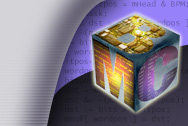|
Analogue audio electronics and stuff
From an early age I was very interested in electrical things. My father worked as a mechanic at a factory and we had a very well equipped garage at home. However, I didn't share the same interest as him in fixing cars and all other metal kind of work that came along with that. I liked electronics.
However, being a kid, it's not easy to get the grip and the concepts of electricity used in electronics. Magnetism on the other hand was easier. I was to the library and borrowed several do-it-yourself books on how to make electrical engines and things like that. Below is a picture of an engine that I made when I was about 11.
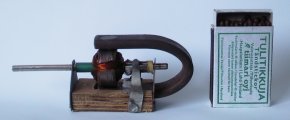
The engine actually worked, and it was quite strong too. I was making a small boat of wood in the woodwork at school that it would have fitted. However, I did not find a good way to make the shaft transmission to the propeller waterproof.
As years went by, I became more and more interested in analogue audio electronics such as loudspeakers, filters, pre-amplifiers, power-amplifiers, etc. I was trying to build the "perfect" sound system with the limited budget I had as a young student. Below you can see some of the pieces I built during my most active time at the age 16 to 19. I didn't actually design the amplifier circuit schematics myself, they are taken from various literature. However, the rest is designed and made by me, including the metal enclosures.
2 x 60 Watt power-amplifier
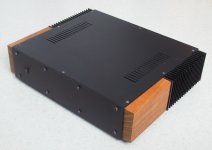
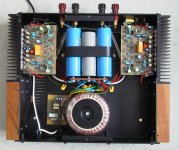
This little baby was the last piece I made. It's a stereo power-amplifier with 2 x 60 Watt output power at 8 Ohm load. It's a symmetrical, DC coupled design. Pretty much everything is over dimensioned. The transformer in the power supply can deliver 500 VA continuous output power and is backed up with 6 huge capacitors totalling 160.000 uF. This is the kind of power supply you would find in a high-end amplifier from Krell. The output stage of the amplifier, among many other things, is very interesting. It consists of two pairs of three parallel-connected (3+3) low-power transistors of type the BD911 and BD912 per channel. This is because low-power transistors normally have better electrical properties than high-power ones. The whole amplifier has the dimensions (WxHxD) 47x12x40 cm and a weight of 17 kg.
This really is a very nice little power-amplifier. I'm quite satisfied with the discreet look too. It has just an On/Off switch on the front and no indicator LED to show if it's on or off. I have used it for many years now in my home stereo system. Sometimes to drive the main speakers and sometimes using just one channel to drive a sub-woofer.
Tube pre-amplifier
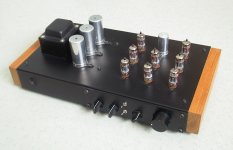
This "thing" is a tube pre-amplifier, with an input source selector and a volume control. Unfortunately I also added bass and treble controls which wasn't in my original plans, i.e. "less is better". The interesting thing with this design is that there is no feedback-loop in the amplification circuit. The signal just gets amplified and goes straight through. This is possible as tubes are more linear than transistors and have much lower amplification.
I added the picture here mostly because of its look. It still needs some work, which in reality means that it will never be finished. I was planning to remake it. I had already bought two new monster size capacitors that I should use and was about to rip it apart and remove the bass and treble controls but never got around doing it.
Accessories
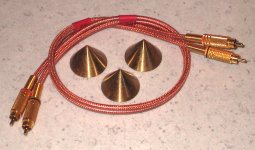
Having the right accessories was of course very important. The signal cable was soldered at home and the cones where made by my father at his work. The cones are supposed to go under the speaker cabinets, with the edge pointing down to the floor. A small coin can be placed on the floor to protect it. In theory, the idea is to make the contact area between the speakers and the floor as small as possible, not to let vibrations in the speaker travel into the floor.
Today I really doubt that this type of accessories have any impact on the overall sound quality. The marginal improvements made by this type of accessories are masked by much larger problems caused by the listening environment (the room) and the speakers. However, it looks good, and that's important too.
The end

It's pretty safe to say that my interest in analogue audio electronics came to an abrupt end when I started studying at polytechnic to become an engineer. One of the reasons I started at Arcada (formerly known as the Swedish Institute of Technology) was to learn more advanced math and physics so I could better understand acoustics. I wanted to design loudspeakers! At Arcada I could even take courses in electro acoustics in a school nearby. This sounded perfect! However, at Arcada there was absolutely no climate or culture to practice do-it-yourself activity on spare time in the electronics labs. Sure! They had very well equipped labs, but they where always locked, especially for a first year student! Spare time was also a problem. All the theoretical studies simply took too much time.
I did get something in return though; a B.Sc. degree in electrical engineering and a passion for programming! When I the first year at Arcada took the initial course in C programming I was sold. When I the same year also took linear algebra and vector math I saw the light! Programming real-time 3D graphics became my new thing.
|
